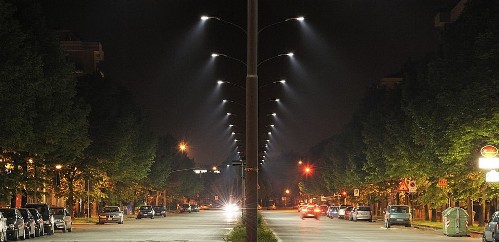Categories: Sources of light, All about LEDs
Number of views: 23935
Comments on the article: 3
Powerful LED arrays in lighting: device and application features
 Since the development of the first practically applicable LED by the University of Illinois professor Nick Holonyak in 1962, more than half a century has passed, however, the revolutionary invention to this day undergoes progressive changes, becoming more perfect and more technological and useful.
Since the development of the first practically applicable LED by the University of Illinois professor Nick Holonyak in 1962, more than half a century has passed, however, the revolutionary invention to this day undergoes progressive changes, becoming more perfect and more technological and useful.
The electroluminescence of a semiconductor transition, with the recombination of electrons and holes, is now the basis for supereconomic light sources. LED, often called LED (short for English light-emitting diode), lamps are gradually gaining a stable position in the market of modern energy-saving lighting technologies, both for domestic needs, and for enterprises and even for street lighting systems.
LED bulbs outperform safety compact fluorescent tubes, which contain mercury, and incandescent lamps and now become completely a relic of the distant past.

The main reason that incandescent lamps are replaced by LED light sources is because the incandescent lamp emits in a very wide spectrum, a significant part of which simply does not work for lighting. Only 5 percent of the total power consumed by an incandescent lamp goes to lighting, and the rest goes to heating.
That is why very powerful LEDs and LED arrays (monolithic assemblies) have recently been so widely represented on the market recently to replace industrial luminaires. An LED emits in a rather narrow range of the spectrum, for example, an orange LED has a wavelength in the range from 590 nm to 610 nm.
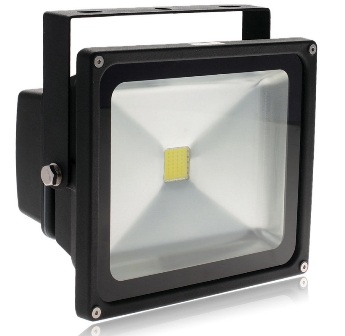
The advantages of LED light sources include:
-
high light output comparable to sodium lamps (a value of 160 lumens per watt is reached),
-
strength and vibration resistance, long service life (up to 100000 hours),
-
wide range for choosing light temperature (from warm 2700 K to cold 6500 K),
-
spectral purity provided by the device itself.
Due to the low inertia, the light turns on immediately at full brightness, regardless of the ambient temperature, and turning on / off does not significantly affect the life of the LEDs. The angle of radiation can be from 15 to 180 degrees.
The use of such products is completely safe for humans due to the low supply voltage, low operating temperature, and of course, environmental friendliness provided by the absence of mercury and phosphorus, as well as the ultraviolet part of the radiation in the spectrum. However, it should be remembered that high temperatures are harmful to any semiconductor, so you should not allow heating above 60-70 degrees Celsius.

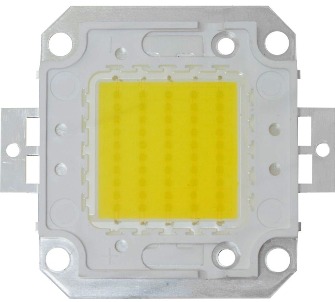
Powerful LED arrays are assemblies of several crystals in one block. Radiating crystals coated with a phosphor are connected in series-parallel to optimize current consumption.
The flat surface of the block is a transparent plastic coating, which allows you to install additional optics to create the necessary pattern of light scattering. The matrices are supplied with a rather thick copper or aluminum substrate with mounting holes for mounting the unit on a heat sink.
The smooth surface of the substrate ensures reliable contact of the unit with the heat sink. Installation should be done carefully so as not to deform or damage the housing. Heat conductive paste should be applied to the entire surface of the substrate.
The cross-section of the connecting wires should not be less than 0.5 square millimeters, and the heat sink area per watt should be about 20-30 square centimeters at a temperature of surrounding objects of 25-35 degrees Celsius. Such matrices are available at different rated powers, up to 300 watts or more. Fundamentally there are no restrictions on the size of the matrices.
The average value of the operating voltage for one crystal is about 3.4 volts, and the current strength is about 350 milliamps. These values may vary slightly, but you should not exceed the voltage allowed for a particular assembly, since the LEDs have a steeply increasing current-voltage characteristic, and will quickly burn out if the current exceeds the critical value for the crystal.
The use of a radiator with a margin in area is the best insurance for the long, reliable and trouble-free operation of the LED matrix. If you limit the current through the crystal to 320 milliamps, the luminous flux will decrease by 3-5%, but at the same time, the life of the LED crystal will increase by an order of magnitude, in practice, the conditions for its power supply will be ideal.
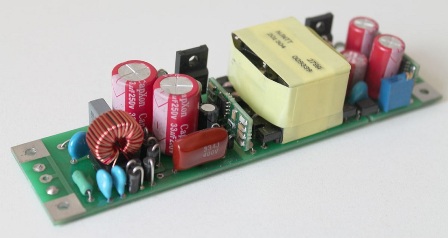
The power source for the LEDs can be any source with stabilization of the load current, and if there is no current stabilization, then a significant margin should be provided for exceeding the maximum permissible current. A change in the supply voltage by 1 volt can lead to an increase in the current strength by a factor of two to three and the result will be degradation of the crystal (the crystal will be damaged - the light flux will decrease) or darkening of the phosphor.
When designing combinations of groups of LEDs in series-parallel connections, preferably a series connection to avoid high operating currents.
If the operating temperature of the crystal over a long period of time exceeds the optimum value, the phosphor will darken and lose its function under the influence of temperature. Darkening and destruction of the phosphor can cause direct sunlight, if they continue to affect the surface of the LED.
It is desirable to include a thermal relay in the design of the power source, placing its sensor on the radiator of the lamp.
If you plan to use an LED matrix in the winter on the street, you need to consider that electrolytic capacitors in the power supply have a restriction on use at low temperatures, therefore, the best solution would be to place the power supply in the room.
When using LED matrices on the street at low temperatures, it should be remembered that the efficiency will increase significantly, and the light output will increase by 10-20 percent of the nominal. And after 500-1000 hours of operation, the light output in any case will be 5-10 percent more, this feature of the crystals is called the “training effect”.
The choice of a radiator for street lighting also requires special attention, it should not contain unnecessary protrusions, recesses and bends, so that natural convection is maximum, and debris and dirt could not accumulate on its surface.
It is desirable to arrange the power supply unit of the lamp so that all moisture accumulating inside the lamp does not affect the circuit elements in the least.
Every year, the technology for the production of high-power LED arrays is improved, manufacturers are looking for the best options for the phosphor. At the moment, most manufacturers use yellow phosphors, they are modified versions of yttrium-aluminum garnet doped with trivalent cerium.
LED lighting technologies are effective, and the designs of them are quite simple. They are widely used in floodlights, lamps, LED strips, decorative lighting and in simple flashlights. Their light power reaches 5000 lm.
Today, LED modules are used to illuminate buildings, streets, advertising structures, tunnels and bridges, fountains, they are used to illuminate office and industrial premises, home interiors and furniture elements, as well as in various modern design projects.
During the holidays, powerful LED lighting systems adorn the facades of buildings, trees, and other objects. The reliability of LED light sources makes it possible to use them in places difficult to access for frequent replacement.
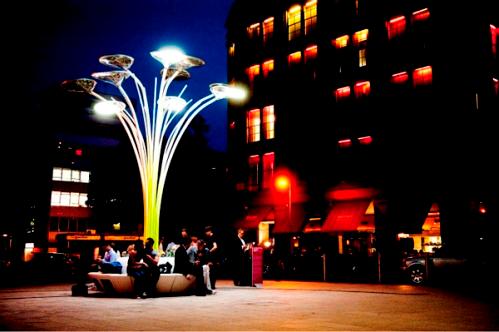
Currently, in many countries of the world, LED lighting has rapidly replaced others. Many cities plan to soon switch to LED street lighting.
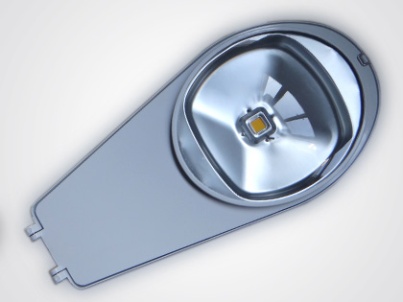
See also at bgv.electricianexp.com
:

